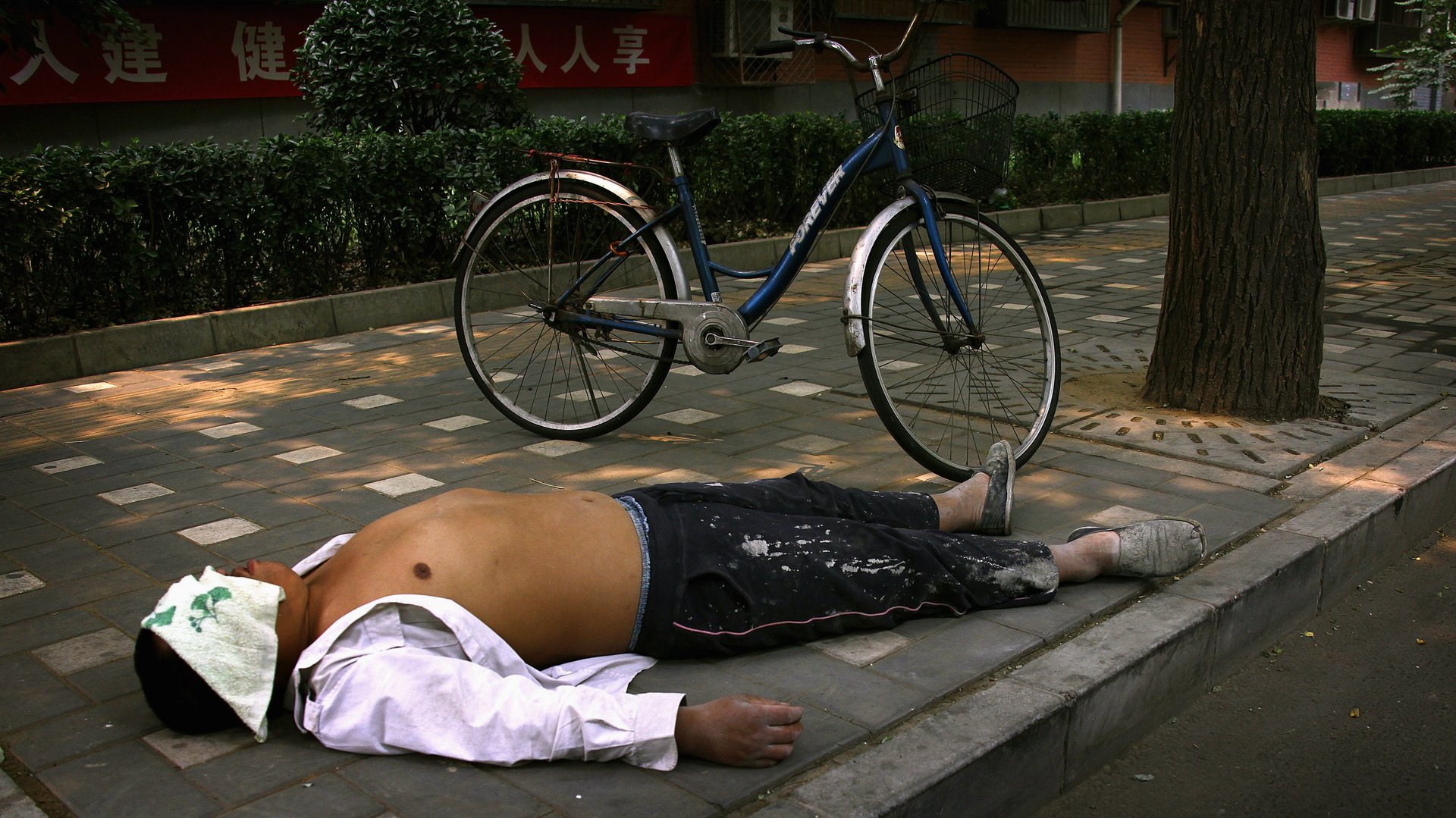It’s getting too hot to work, and it could cost the global economy trillions
The heat is rising, and it could cost the global economy $2 trillion by 2030.


The heat is rising, and it could cost the global economy $2 trillion by 2030.
New research suggests that climbing temperatures will make it harder for workers to do their jobs, particularly in the world’s poorest economies. The situation is worst for those in the lowest paid and most heat-exposed professions, such as construction and farming.
The researchers, led by Tord Kjellstrom of the Health and Environment International Trust in New Zealand, projected the GDP losses due to heat stress for 43 countries using environmental data and computer models. Their results appear in the Asia-Pacific Journal of Public Health.
India and China together stand to lose $450 billion in output by 2030. The economies of richer nations, such as Japan and the UK, were unaffected by heat stress—only the US saw a modest dip of 0.2% of GDP.
It’s Asia and Africa that will suffer the most, Kjellstrom told Bloomberg. In South-East Asia, 15-20% of annual work hours are already lost in heat-exposed jobs; that may double by 2050 as global warming continues. In Malaysia, for instance, work normally slows or stops during the hottest times of the day or year to avoid dangerous heat stress.
Shifting work schedules to beat the heat, along with higher demand for air conditioning, could make people less heat tolerant, the researchers warn. That, in turn, raises the costs associated with heat stress. A city like Bangkok, for instance, needs an extra 2,000 MW—roughly the output of a major power plant—for every 1°C rise in temperature.
In 2015, over 190 countries agreed to keep the global mean temperature “well below” a 2°C increase over what it was before the industrial era, and to “pursue efforts” to keep it even below 1.5°C. However, major countries such as China have yet to ratify the agreement.